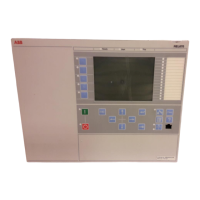Table 17: Test points for phase-to-earth loop of quadrilateral characteristic
Test point R X Comment
P1 0
X1Start
∗
(1+
XEOverXLStart
)
P2 ((
X1Start
∗
(1+
XEOverXLStart
))/
tan(
LineAng
))
X1Start
∗
(1+
XEOverXLStart
)
P3
RFPEStart
0.8 ∗
X1Start
∗
(1+
XEOverXLStart
)
P4 0.8 ∗
RFPEStart
0.8 ∗
RFPEStart
∗
tan(
ArgLd
)
If 2I0 <
I0MinOp
P5
RLd
0 If 2I0 <
I0MinOp
P6
RFPEStart
0 If
OpLoadEnch
= Off
or 2I0 >
I0MinOp
P7 0 -
X1Start
∗
(1+
XEOverXLStart
)
P8 -((
X1Start
∗
(1+
XEOverXLStart
))/
tan(
LineAng
))
-
X1Start
∗
(1+
XEOverXLStart
)
P9 -
RFPEStart
-0.8 ∗
X1Start
∗
(1+
XEOverXLStart
)
P10 -0.8 ∗
RFPEStart
-0.8 ∗
RFPEStart
∗
tan(
ArgLd
)
If 2I0 <
I0MinOp
P11 -
RLd
0 If 2I0 <
I0MinOp
P12 -
RFPEStart
0 If
OpLoadEnch
= Off
or 2I0 >
I0MinOp
P13 0.8 ∗
RFPEStart
-0.8 ∗
RFPEStart
∗
tan(
ArgLd
)
If 2I0 <
I0MinOp
P14
RFPEStart
-0.8 ∗
X1Start
∗
(1+
XEOverXLStart
)
P15 -0.8 ∗
RFPEStart
0.8 ∗
RFPEStart
∗
tan(
ArgLd
)
If 2I0 <
I0MinOp
P16 -
RFPEStart
0.8 ∗
X1Start
∗
(1+
XEOverXLStart
)
1. Change the magnitude and angle of phase-to-earth voltage in phase L1 to
achieve impedances at test points P1, P2, …, P16.
2. For each test point, observe that the output signals STELEMST and
STNDZL1 are activated.
3. Repeat the above test by injecting phase-to-earth voltage in phase L2 in
accordance with test points and observe that the output signals STELEMST
and STNDZL2 are activated.
For phase-to-earth loop of quadrilateral characteristic in
solidly earthed system used for starting element, the fault
resistive reach can be expanded by considering
REOverRLStart into their fault resistance settings and the
1MRK 506 377-UEN C Section 10
Testing functionality by secondary injection
Railway application RER670 2.2 IEC 87
Commissioning manual

